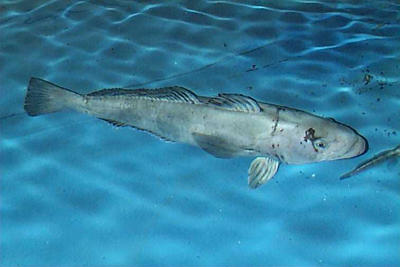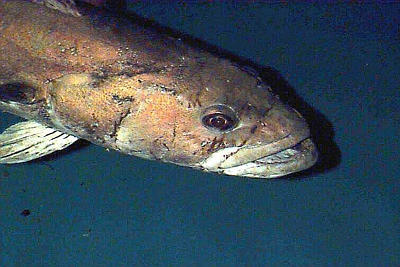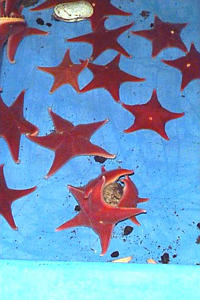22 November, 1998
Sunday November 22, 1998
Good Morning from Antarctica on this beautiful snowy morning!
Quite a change from last night's crystal clear, blue-sky, wind-whipped
evening.
CLOTHES
Several students have asked me about my clothes. So I thought I'd
copy one of my responses here for everyone: Normally around town I
wear the same clothes that I wear at school except I don't wear a tie
and I wear sneakers instead of shoes. When we go out fishing or hiking
we wear many layers of clothing so if we get hot we can peel the
layers off. This is called our ECW gear. None of this clothing is
cotton since cotton loses all its insulaing ability when it is wet.
The layers from the skin out include: expedition-weight thermal
underwear, fleece bibbed overalls, windbreaker bibbed overalls with
nice big pockets, a fleece zipper jacket, and a huge down coat with an
excellent hood and lots of pockets. Also I wear polypropylene liner
gloves inside suede, lined mittens. If I am taking a photo or doing
something else that requires fingers, I remove the mittens but my
fingers are still protected from the cold camera and air by the liner
gloves. When I am snow-mobiling, my hands are kept warm inside my
mittens by the hot-grips--the electrically-heated handlebars. On my
head/neck I wear a fleece neck warmer, a fleece hat, and sometimes a
polypropylene balaclava face-mask and lined, windbreaker-hat. My face
is protected by the balaclava, the neck-gaiter, and my beard, as well
as by the ski-goggles which I wear for sun protection. While
snowmobiling or in the strong wind any exposed skin can become
frost-bitten quickly so even the nose must be covered then. On my feet
I wear one pair of soft, cozy, woolen socks inside roomy, rubber,
insulated, army-issue "bunny-boots". My feet in the past have always
been difficult to keep warm, but they have never been cold here inside
these bunny boots. Whenever we go out we also bring an extra set of
mittens, liners, socks, and thermal underwear to change into if the
others get wet from perspiration.
MELTING ICE
Another student (Gabrielle Miller) asked me about the calving of
icebergs from the ice shelves. In parcticular she mentioned the one
that recently broke off the Ronne Ice Shelf on the other side of
Antarctica. This iceberg is about the size of Delaware, and a German
research station which was on the ice shelf is now adrift in the
Weddell Sea on this ice. You can see a satellite picture of this
iceberg and others at http://uwamrc.ssec.wisc.edu/amrc/amrcgallery.html
Gabrielle was wondering if this is a sign of global warming. My
roomate, Dr Barclay Kamb, is a geophysicist who studies glaciers so I
asked him Gabrielle's question, My summary of his answer is as follows:
Dear Gabrielle,
I asked my roommate about the huge iceberg that calved off the Ronne
Ice Shelf. He said this kind of occurence happens so rarely that we
can't be sure that it is happening any faster now than before, so we
don't know if it is caused by global warming. However he also said
that one small ice shelf on the Antarctic Peninsula near S. America
has totally melted, and another one on the Peninsula (Larsen Ice
Shelf) is melting much faster than normal. People there have recently
measured a local increase in temperature of about 3-5 degrees. Notice
I said "local". It is not all over Antarctica, just in the Antarctic
Peninsula. (They have also seen changes in the plant life in that
region WHY?) The local increase in temperature is much greater than
the global increase. No one knows why it is such a local phenomenon.
Possibly it has to do with global warming's effects on the flow of
ocean currents and air streams in that part of the world. There seems
to be no significant evidence to prove that more iceberg calving or
ice-sheet melting is happening in other parts of Antarctica at this
time.
Good Question!
BUBBLES
Students and faculty at Flint Hill School did experiments with
bubbles this past week. They asked me what it was like to blow
bubbles here in Antarctica so I tried it. Unfortunately the weather
here was not very cold; about 8 degrees Fahrenheit was the coldest I
could get. The bubbles did not freeze. Most of the bubbles were
ping-pong ball sized, but a few were the size of tennis balls. There
were several double-bubbles and a few triple-bubbles. The bubbles blew
around in the wind for several seconds (up to about 10 seconds) and
popped when they landed on the ground. Each time I blew bubbles I was
able to produce between 0 and 6 bubbles, producing bubbles about 80%
of the time. I tried blowing bubbles until my hands got too cold in
the freezing cold wind (about 5 minutes).
However, Dave Stillie, the pastor of the Chapel of the Snows, is
going to the South Pole for Thanksgiving. I am going to send the
bubble solution and wand with him and he will try it there. The
temperatures there are sure to be below -30 degrees F. We hope to find
out if the bubbles freeze. He will try to use his digital video camera
to take photos of the process.
EATING MAWSONI
Yesterday I was pleased to find an e-mailed invitation to a party
where Dissostichus mawsoni, the Antarctic Cod, was going to be served.
This is the huge fish that I told you about in an earlier journal.
The other fish group (led by Antarctic fish research guru, Dr Art
DeVries) is studying mawsoni to learn about their antifreeze and their
ability to remove ice crystals that start to form in their blood
(probably by endocytosis in their spleen). They are huge fish,
sometimes over a meter long and weighing over 200 pounds (I think the
record was 240 pounds). I will attach photos to this journal so you
can see what they look like. These fish have 8 kinds of glycoprotein
antifreezes. When many people hear this they ask me if these fish are
poisonous to eat because, as we all know, car antifreeze is poisonous.
A reasonable question. But this kind of antifeeeze is quite
edible--it is just a protein with a sugar attached to it--and it did
not give the fish any bad flavor. In fact, even though I typically do
not like to eat fish, this light, moist, white meat was delectable. It
had a light greasy texture and a pleasant taste. It didn't taste at
all "fishy". Some people don't like the oiliness. Perhaps I wouldn't
have liked a whole meal of it either. When I got to it there were just
a few morsels left so I literally got just a taste of it. A couple
days ago I mentioned this fish and the concern about the fact that
commercial fishing boats are starting to encroach on Antarctic waters
to fish for these very long-lived and docile fish. I think the fish
we ate was what was left-over after the fish researchers removed the
internal organs from one of them for their research. They don't use
the muscle (the meat) in their research so maybe this is where it
went. (I kind of didn't want to ask becasue I have gotten kind of
attached to the huge docile mawsoni milling about in the big tanks
down in the old aquarium.)
I mentioned the greasiness of this fish. Why are they so
greasy? Remember a few days ago when I asked you about how the fish
can be neutrally buoyant without an air sac? This is part of the
reason why. Oil is not as dense as water so it floats. You have seen
this in oil-and-vinegar salad dressing. (Let the bottle sit after you
shake it and you will see the oil separate out and float above the
watery vinegar.) Antarctic fish have a lot of lipid
(oil,fat,grease)deposits thoughout their body to make them less dense
so they float easily. Ellen Turner, a 10th grader at Flint Hill,
figured this out. She also guessed correctly that instead of bones
they have cartilage. Also most Antarctic fish have reduced the number
and weight of the scales in their skin.
Eating mawsoni was the hghlight of the day yesterday. It is a new
critter to add to my list of bizarre things eaten (This list includes
beetle grubs and boiled fern fronds in New Guinea, fried grasshoppers
and crickets in Virginia, raw lemon ants in the Amazon Basin, and
broiled ostrich, gazelle, and zebra in Kenya.)
On that note I'd better say:
"Have a good day and do something good for someone"
I'll try to show some more photos of other fish and talk about
the research that the rest of the people in my group are doing tomorrow.
PS. Correction: Mt Discovery is only 8795 feet tall not 12,000. Sorry
'bout that.
Fred Atwood
_________________________________________________________
DO YOU YAHOO!?
Get your free @yahoo.com address at http://mail.yahoo.com

Dissostichus mawsoni, the huge Antarctic Cod that lives in the deep cold waters of Antarctica. Research by a team led by Dr. Art DeVries has found 8 kinds of glycoprotein antifreezes that help to keep the mawsoni from freezing. They are also studying how the fish removes ice crystals that start to form despite the antifreeze.

A closer view of the cute face of Dissostichus mawsoni. Don't you just want to hug-and-kiss it?

Odontaster validus is the abundant, colorful, predaceous starfish that lives on the bottom of the ocean here. We often pull them up in our fish traps. Research here at Crary lab has shown that sea sponges, which of course canno t run away from starfish, produce a toxin that keeps the starfish from eating them!

Sea Urchins, like their relatives the starfish, belong to the phylum Echinodermata--the spiny-skinned critters with radial symmetry. These ones have very spiny skin. I guess the fish I am studying, Trematomus bernacchii, would have a hard time trying to eat one of these!
Contact the TEA in the field at
.
If you cannot connect through your browser, copy the
TEA's e-mail address in the "To:" line of
your favorite e-mail package.
|
